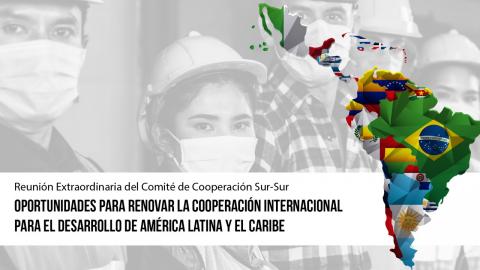Noticias
Dear Chair, Excellencies, all protocols observed.
- Middle-income countries, or MICs, comprise 107 states worldwide.
- They constitute a large share of countries in the Arab Region, Asia Pacific and Latin America and the Caribbean, and thirty out of 54 African countries are middle-income.
- They represent over 75% of the world’s population and are home to 62% of the world’s poor.
- They account for a third of global GDP, 45% of total investment, and 30% of total exports.
These figures speak for themselves about the importance of the MICs in the world and for the implementation of the 2030 Agenda.
Now, one has to be clear about two points: first, the group is very heterogenous, so there is no one-size-fits-all way of serving such varied group; and second, MICs do have some common characteristics.
What are these common characteristics?
The development experience since the 1950s is that rapid growth has allowed many countries to escape from being low-income to middle-income, but very few have managed to make the leap into high-income, countries get stuck in the much discussed “middle income trap”.
Now why do they get stuck? The answer is important, because if we agree on the reasons, we can more easily agree on the solutions.
The knowledge from experience is that they get stuck because their capacity to grow weakens, which stagnates the growth of income per capita. This in turn, is due to a combination of causes: low investment rates; bad learning results from education and therefore deficiencies in human talent; low productivity growth; low investment in science and technology; low capacity to absorb new technologies, promote productive diversification and innovate; limited fiscal space and financial constraints.
And this gives us a basic list of areas in which governments in middle income countries must work and in which the UN System can provide support.
Now, all this is closely linked to the Summit of the Future and the F4D Summit
Firstly, the MICs would greatly benefit from a good package of reforms of the international financial architecture, including to address their limited access to concessional finance and debt relief initiatives owing to classifications based on income per capita, and to inclusive and low-cost external resource mobilization options, including climate finance. The UN has been very helpful in clarifying the list of priority reforms necessary. The challenge is to move from words to actions. Regional Commissions have been very engaged in this process.
Secondly, the policies for productive transformation, science and technology, digital transformation, education, etc are also prominent in the Summit of the Future, and go to the heart of the capacity to grow out of the middle-income trap, and leap into the high-income category, creating good, decent jobs, and reducing poverty and deprivation. Again, all these are key areas in which the UN system works and are associated with several SDGs.
Thirdly, data and analytical support regarding the unique vulnerabilities and structural gaps faced by MICs, including the uptake of the Multidimensional Vulnerability Index is another key issue in which the UN has been working.
Finally, the Regional Commissions in their role as co-vicechairs of the Regional Cooperation Platforms in each region, also provide country-level support tailored to the financing and sustainable development challenges of MICs, in accordance with the integrated policy support envisioned by the UN development system reforms
Much more can be said, but I am afraid this is all that can be packaged in 3 minutes.
Thank you.


